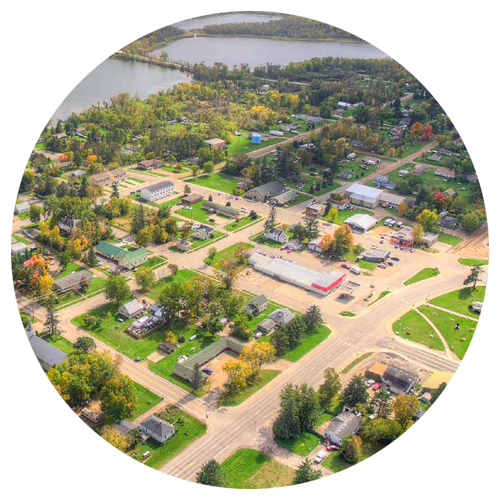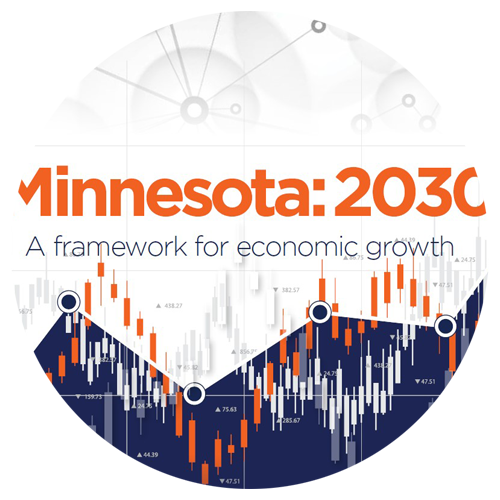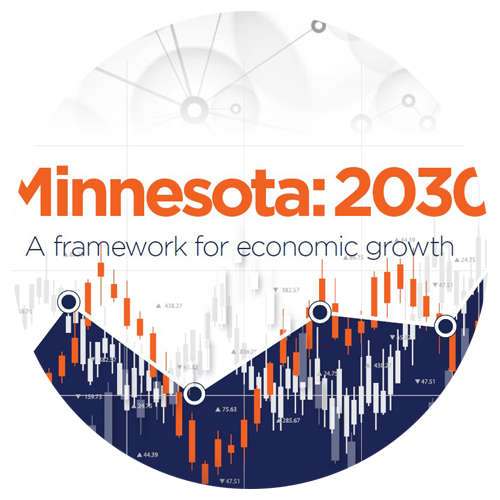Minnesota’s economy: Slowing growth
Minnesota: 2030
A framework for economic growth
Minnesota grew faster than the U.S. for decades, with job growth exceeding national job growth 27 of 35 years from 1970-2004. Growth accelerated in the 1990s, with real GDP climbing 3.9 percent on average and employment growing 2.2 percent annually. Per-capita incomes grew alongside Minnesota’s economy, reaching a peak of 108 percent of U.S. levels in 2004.
Since 2005, however, Minnesota’s economy has grown more slowly than the U.S., averaging just 1.4 percent real GDP growth and 0.7 percent job growth, compared to 1.8 percent and 1.2 percent respectively for the U.S.
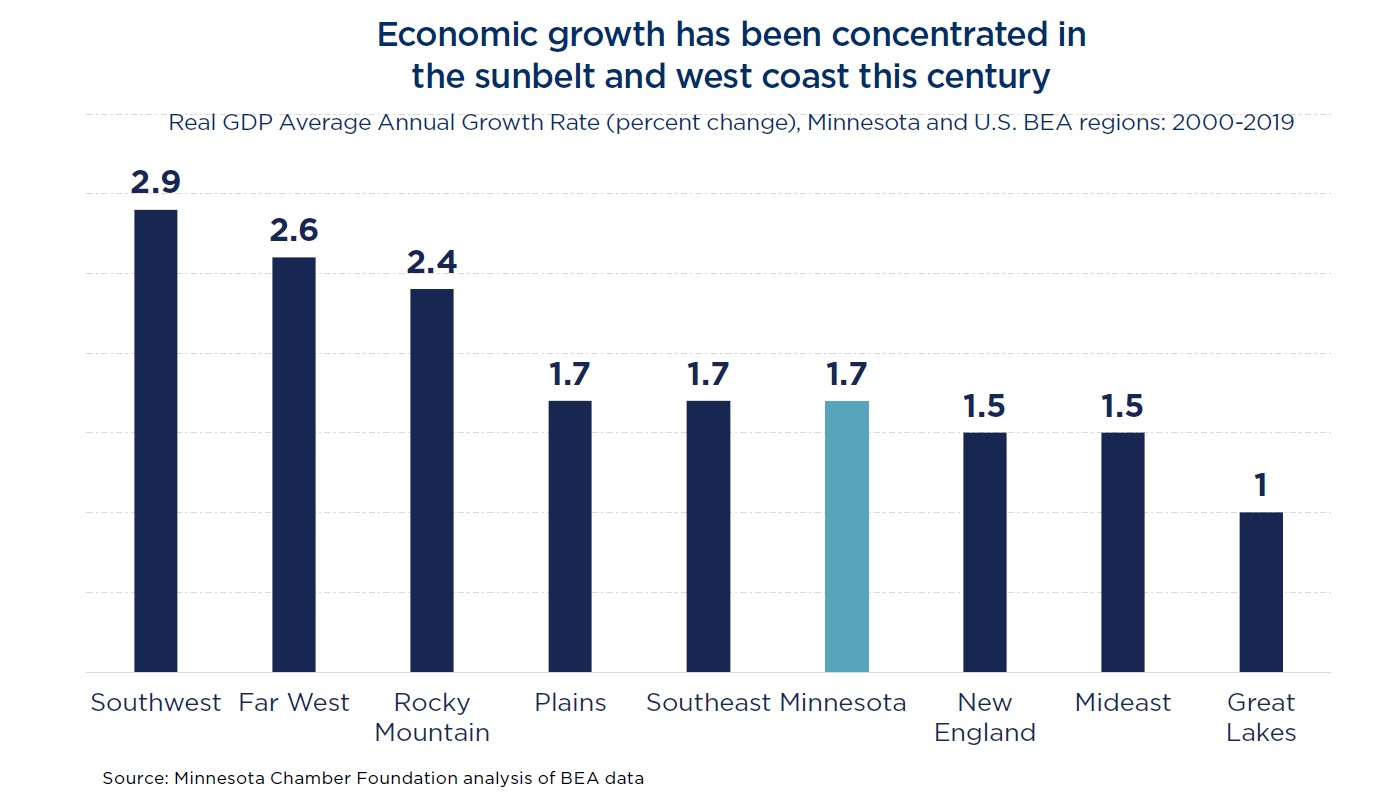
Minnesota’s overall rankings remained somewhat stable in this period, but lost ground to national peers, such as Massachusetts, Colorado, Washington and North Carolina, in employment and real GDP. Minnesota’s per-capita income also began moving closer to the U.S. average as output and job growth slowed.
While it is difficult to untangle the causal factors, several themes are evident in the data. Among the most significant are the long-term slowdowns in population and labor force growth that have constrained Minnesota’s growth in employment and economic output.
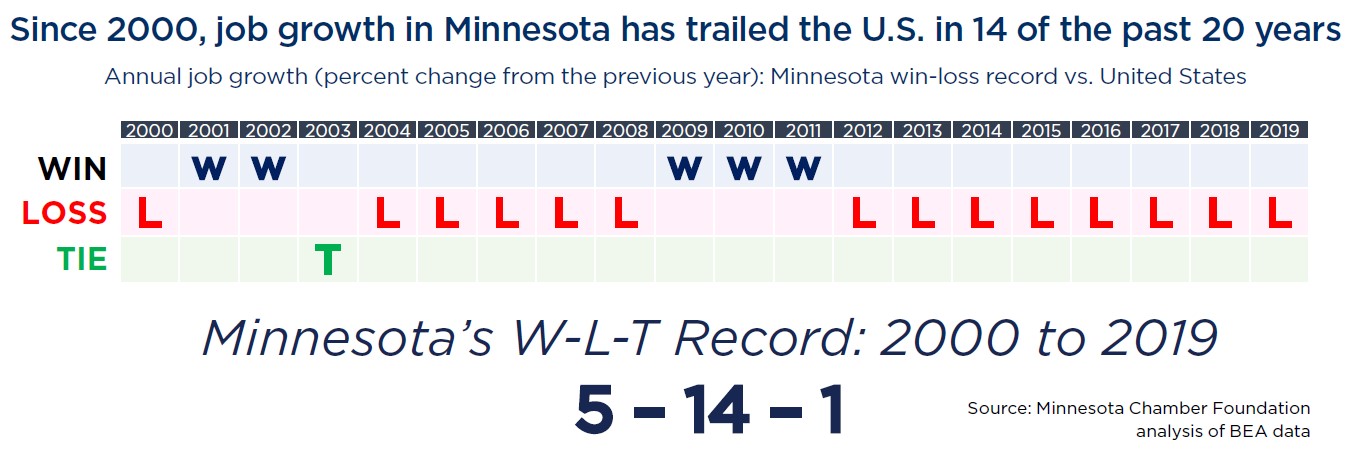
Population and labor force growth
Population growth, job growth and economic growth are inherently linked. In fact, the formula for economic growth is straightforward.
Population growth nationally has been slowing for Minnesota’s economy: Slowing growth decades, growing at the slowest rate since the 1930s. Minnesota, by contrast, was growing at a fast pace in the late 1980s and 1990s, but fell off sharply after 2000.
Population growth has three parts: natural growth, domestic migration and international migration.
Natural growth – births subtracting deaths – continued Minnesota’s long-standing trend of decline in 2019, adding just 24,442 new Minnesotans net, according to U.S. Census Bureau estimates.
4 Factors Driving Minnesota’s Slow Economic Growth
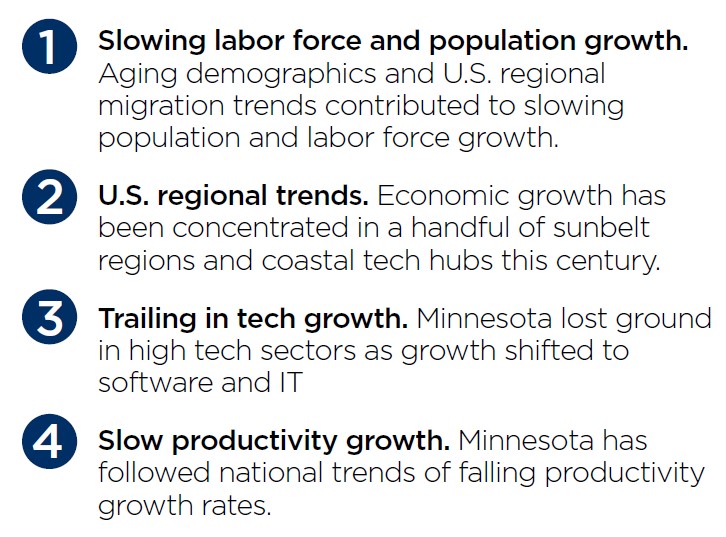
Domestic migration – the number of residents attracted from other states minus the number of Minnesotans moving elsewhere – tallied 15 years of consecutive net losses from 2002 to 2016, before registering net gains of 7,941 in 2017 and 6,769 in 2018. Domestic migration slumped to a net gain of just 65 new residents in 2019.
International migration – the number of immigrants and new Americans arriving from other countries – slowed again in 2019 from post-recession highs, likely due to increased competition for workers and changes in federal immigration policies. Nearly 60
percent of new Minnesota residents, 10,718 people, were immigrants in 2018 – a growth factor for the economy. That number slowed to just 9,113 new Minnesotans in 2019, according to Census Bureau estimates.
Minnesota’s labor force has long been a strength – and Minnesota’s labor force participation rate perennially ranks in the top five states.
The state’s labor force growth strongly outpaced the U.S. in the 1990s, reflecting population growth and strong participation across multiple age groups.
With population trends slowing in Minnesota around 2000, labor force and economic growth substantially followed suit. Labor force growth, like population growth, is currently projected to slow even further. This is an issue.
Increasing the number of people available and willing to be employed producing goods and services will be important to the vibrancy of our future economy.
